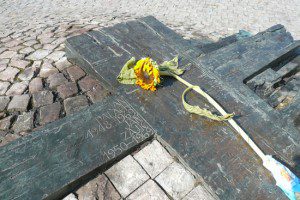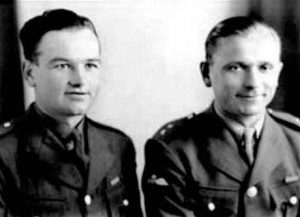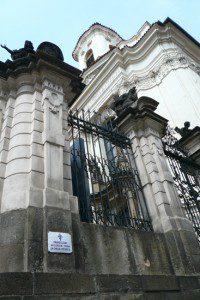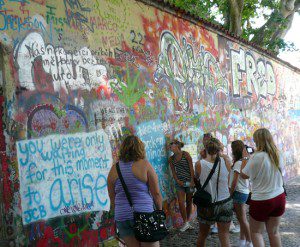
On Jan. 19, 1969, a university student, named Jan Palach, died in a hospital in Prague. Three days earlier he had gone to Wenceslas Square, near a statue of the 10th century duke of Bohemia (and the “Good King Wenceslas” of Christmas carol fame). There, in front of his history classmates and the authorities, he set himself on fire in protest against the Soviet Union’s occupation of his homeland. His suicide was a final act of defiance against the latest in a long line of occupiers of his country – the Czech Republic.
“It was [his] last appeal for resistance,” author Petr Cornej wrote.
From 1948 to 1968, the communists had ruled Czechoslovakia much the way Stalin had ruled the Soviet Union – executing political enemies, muzzling the press and religious expression and debilitating the economy with collectivism. In the late ’60s, however, Czech students began protesting. They espoused the ideals of democracy and tolerance and a desire to combine social justice with individual freedom, as it was in the West. The so-called “Prague Spring” seemed to have the Czech Communist rulers on the run, until August 1968, when a half-million Soviet troops invaded Jan Palach’s country prompting his deadly individual response.
The past week I’ve been leading a Canadian tour group of some vets, families and travellers interested in the turbulent 20th century history of the former East Bloc countries of Poland, Germany and the Czech Republic. This past week, during our stay in Prague, we visited sites illustrating the repeated occupations of the former Czechoslovakia. But more important, we Canadians learned about the way Czech citizens have always defied those who tried to crush their artistic and political expression as well as their culture of tolerance and free speech.

Another statement of Czech defiance to oppression by outsiders occurred in 1942, when two Czech commandos, who were trained in Britain, dropped into occupied Europe and harboured by fellow resistance fighters, attacked Nazi General of Police Reinhard Heydrich; he had been the so-called Protector of Bohemia and Moravia and architect of “the Final Solution,” the infamous Nazi policy to exterminate all Jews in Europe. On May 27, 1942, as Heydrich’s car travelled into Prague, Czech sergeants Jozef Gabcik and Jan Kubis peppered the Nazi official with gunfire and tossed a hand grenade into his car. Heydrich died a week later.

Although “Operation Anthropoid” had succeeded, the hiding place chosen by the Czech commandos – the crypt beneath the Cathedral of Saints Cyril and Methodius – was betrayed. On June 18, 1942, 800 German troops and SS laid siege to the cathedral where Gabcik, Kubis and five other resistance fighters were holed up. The Germans burned, flooded and fired into the crypt for three hours until the last four commandos – realizing their imminent capture – committed suicide, but not before shouting out to their oppressors:
“We will not surrender. Never!”
The commandos’ fellow citizens paid dearly for Heydrich’s assassination. On June 10, 1942, three days after his death, the Nazis razed the Czech town of Lidice; they killed 340 civilian residents. That September the church’s elders were tried and executed by the Gestapo. Then, at the nearby fortress of Terezin, all 263 Czechs (previously arrested for having aided the commandos) were shot to death in one day – all in reprisal.
The legacy of oppression in the Czech Republic is long and tragic. It dates back even into Medieval times, through the First and Second World Wars and, of course, through the nearly 50 years of communist domination of the country during the Cold War.

But even following the collapse of the Prague Spring in 1968, there remained moments and places of civil defiance. Also on our tour, this week, was a stop at the famous John Lennon Wall. Now just a collection of graffiti on a stonewall across from the French embassy, the spot became a focal point for Czech student protest because of a 1960s visit by the Beatles – hence the John Lennon Wall moniker.
“It worked,” our guide said, “because the students felt they could protest in front of the French embassy and know that Communist authorities wouldn’t dare attack the demonstrators in front of embassy security cameras.”
Still the occupation and muzzling of Czechoslovakia continued. Then, in January 1989, on the 20th anniversary of Jan Palach’s death, student demonstrations began again. Opposition to the communist regime found a leader in playwright Vaclav Havel.
The “Velvet Revolution,” a series of non-violent protests against the communists, brought the Soviet-supported regime to its knees and Havel become Czechoslovakia’s first freely elected president. This past week, when I led my tour to the Prague Castle, residence of the current Czech president, we learned that the motto of the modern, reborn republic is as it was in the 15th century:
“Truth is winning.”
There are no words to describe the bravery of these men. Hitler’s Germany was so filled with EVIL and should be forgotten. God bless all those who fought and gave their lives on what was one the worst conflicts ever to have happened.